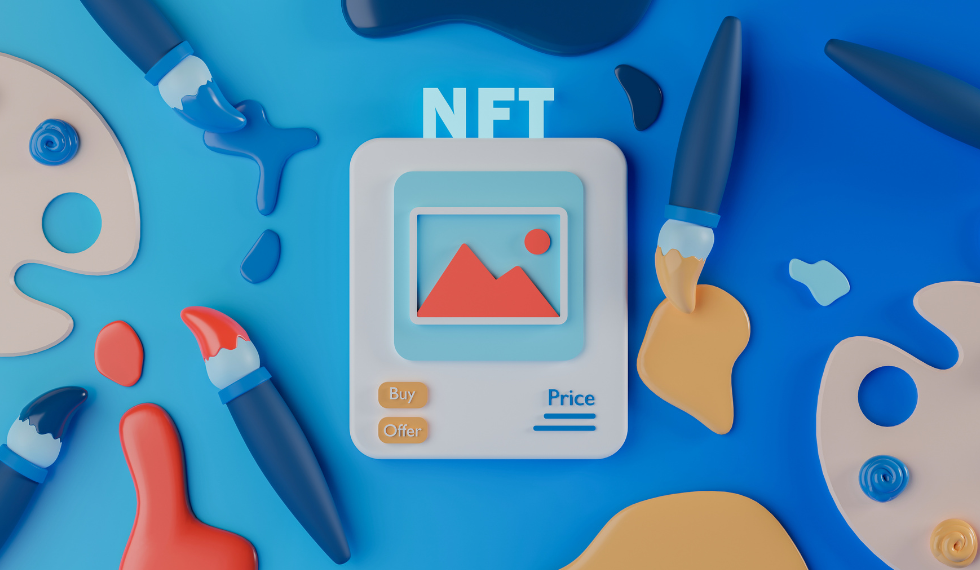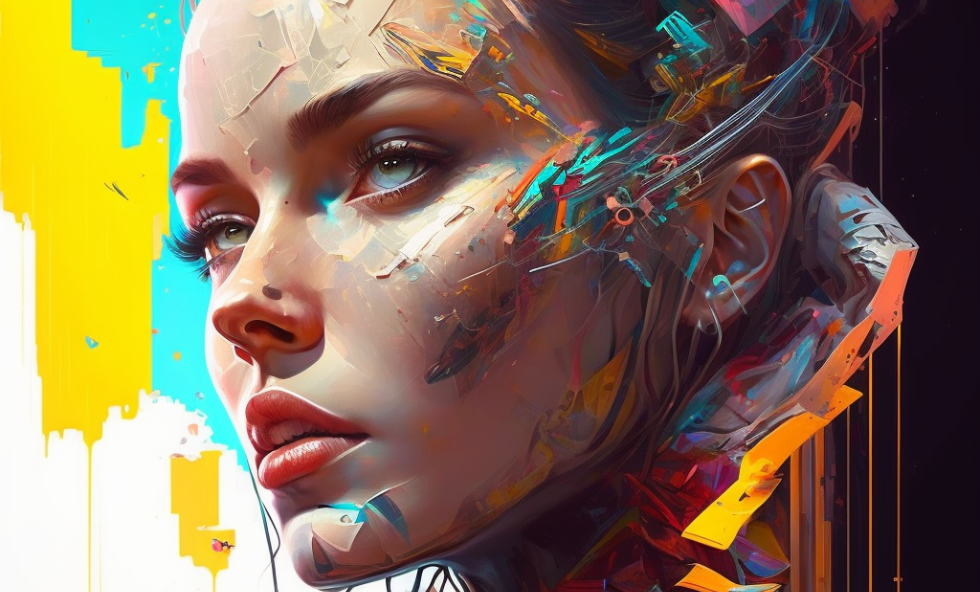The art market is constantly evolving, and it can be difficult to predict what art market trends will be popular in the years to come. However, there are a few trends that are emerging in 2023 that are likely to have a major impact on the art world. These trends include the rise of digital art, the continued growth of NFTs, the focus on sustainability, the rise of immersive art, and the intersection of art and technology.
The Rise of Digital Art

The rise of digital art is one of the most significant trends in the art world today. Digital art is art that is created using digital technology, such as computers, tablets, and smartphones. It can be created in a variety of ways, including painting, drawing, sculpture, animation, and video.
There are a number of factors that are driving the increasing popularity of digital art. One factor is the affordability of digital art tools. In the past, artists needed to invest in expensive art supplies, such as paints, brushes, and canvases. However, digital art tools are now much more affordable, making it possible for anyone to create art.
Another factor driving the popularity of digital art is the ease of distribution. Digital art can be easily shared online, making it accessible to a global audience. This is in contrast to traditional art, which is often limited to physical galleries and museums.
Digital art is also becoming increasingly popular because of its versatility. Digital artists can create art that would be impossible to create using traditional methods. For example, digital artists can create art that is interactive, immersive, and even animated.
There are a number of different types of digital art that are emerging today. Some of the most popular types of digital art include:
- Digital painting: Digital painting is a type of digital art that is created using software programs that mimic traditional painting techniques. Digital painters can use a variety of brushes and tools to create realistic and expressive paintings.
- Digital drawing: Digital drawing is a type of digital art that is created using software programs that mimic traditional drawing techniques. Digital drawers can use a variety of pens and tools to create precise and detailed drawings.
- Digital sculpture: Digital sculpture is a type of digital art that is created using software programs that allow artists to create three-dimensional objects. Digital sculptors can use a variety of tools to manipulate and sculpt digital clay.
- Digital animation: Digital animation is a type of digital art that is created using software programs that allow artists to create moving images. Digital animators can use a variety of techniques to create realistic and stylized animations.
- Virtual reality art: Virtual reality art is a type of digital art that is created for virtual reality headsets. Virtual reality art allows viewers to experience art in a completely immersive way.
- Augmented reality art: Augmented reality art is a type of digital art that is created for augmented reality devices. Augmented reality art allows viewers to see art that is overlaid on the real world.
The rise of digital art is a significant development in the art world. It is opening up new possibilities for artists and allowing them to create art that would be impossible to create using traditional methods. Digital art is also becoming increasingly popular with collectors and museums, and it is likely to continue to grow in prominence in the years to come.
Art Market Trends: The Continued Growth of NFTs

Non-fungible tokens (NFTs) have exploded in popularity in recent years, and they are having a major impact on the art world. NFTs are digital assets that are stored on the blockchain, and they can represent anything from art to music to sports memorabilia.
NFTs have the potential to revolutionize the art market. They allow artists to sell their work directly to collectors, without the need for a gallery or auction house. This can make it easier for artists to get their work seen by a wider audience, and it can also lead to higher prices for their work.
In addition, NFTs can provide artists with a new way to connect with collectors and fans. NFTs can be programmed to give artists a cut of any future sales, which can provide them with a steady stream of income. NFTs are also being used by collectors to invest in art. NFTs are considered to be a rare and valuable asset, and they can be resold for a profit. This has led to a surge in the value of NFTs, and some have sold for millions of dollars.
Here are some of the ways that NFTs are being used by artists and collectors:
- Artists are using NFTs to sell their work directly to collectors. This allows artists to avoid the fees that are typically charged by galleries and auction houses.
- Collectors are using NFTs to invest in art. NFTs are considered to be a rare and valuable asset, and they can be resold for a profit.
- Artists are using NFTs to create unique experiences for collectors. For example, some artists are offering collectors exclusive access to their work or early access to new releases.
- Collectors are using NFTs to support their favorite artists. When collectors buy an NFT, they are essentially investing in the artist’s career. This can help to support artists and ensure that they can continue to create art.
The continued growth of NFTs is having a major impact on the art world. It is opening up new possibilities for artists and collectors, and it is changing the way that art is bought, sold, and experienced. It is still too early to say what the long-term impact of NFTs will be, but they are certainly having a major impact on the art world today.
Art Market Trends: The Focus on Sustainability
The current emphasis on sustainability within the art world stands as a pivotal trend, reflecting a growing commitment among artists to infuse eco-conscious practices into their creations. A heightened demand for art crafted from recycled materials or produced through environmentally friendly means underscores this shift. Environmental awareness has propelled this movement, with the art industry recognizing its significant resource consumption and waste generation. Artists are taking proactive steps to mitigate their environmental footprint, seeking innovative ways to align their craft with sustainability principles.
Another driving force behind this trend is the desire for art that carries profound meaning and impact. Art enthusiasts now seek pieces that resonate with their values, with sustainable art resonating as a poignant vehicle for addressing pressing issues like climate change and ecological deterioration. Diverse approaches define how artists are integrating sustainability into their work. Some ingeniously employ recycled materials, sculpting intricate forms from upcycled clothing or painting on recycled paper. Others embrace sustainable practices in their studios, harnessing solar power and using low-VOC paints.
Beyond creation, sustainability is fueling art’s potential to communicate and advocate. Murals depicting climate change’s effects and installations exploring the human-environment relationship serve as compelling tools for raising ecological awareness. The growing focus on sustainability marks a positive evolution in the art realm. Artists are becoming conscientious stewards of the environment, while a thirst for meaningful, impactful art fuels the demand for sustainable creations. As this trend continues to flourish, it paves the way for a future where art not only captivates aesthetically but also resonates ethically.
Art Market Trends: The Rise of Immersive Art

The rise of immersive art is one of the most significant trends in the art world today. Immersive art is art that surrounds the viewer and creates an immersive experience. This type of art is becoming increasingly popular, as it offers a unique and engaging way to experience art.
There are a number of reasons for the increasing popularity of immersive art. One reason is the increasing availability of technology that can be used to create immersive art experiences. For example, virtual reality (VR) and augmented reality (AR) are becoming increasingly affordable and accessible, and they can be used to create truly immersive art experiences.
Another reason for the increasing popularity of immersive art is the growing demand for art that is interactive and participatory. Viewers of immersive art are not simply passive observers; they are active participants in the experience. This makes immersive art more engaging and memorable than traditional art forms.
There are a number of different types of immersive art that are emerging today. Some of the most popular types of immersive art include:
- Virtual reality art: Virtual reality art is art that is created for virtual reality headsets. Virtual reality art allows viewers to experience art in a completely immersive way.
- Augmented reality art: Augmented reality art is art that is created for augmented reality devices. Augmented reality art allows viewers to see art that is overlaid on the real world.
- 360-degree video art: 360-degree video art is art that is created using 360-degree cameras. 360-degree video art allows viewers to see the art from all angles.
- Installation art: Installation art is art that is created specifically for a particular space. Installation art can be immersive, interactive, or both.
Leading the charge in immersive art are visionary artists who dare to push the boundaries of this dynamic medium. Among these trailblazers, Refik Anadol stands as a digital artist, delving into the intricate interplay between technology, art, and human cognition. Swiss artist Pipilotti Rist, on the other hand, weaves her immersive video installations with playful whimsy, tackling themes of identity and sexuality.
The Japanese art collective, TeamLab, carves a niche with interactive digital experiences exploring the convergence of nature and technology. Meanwhile, Meow Wolf, an American arts collective, invites participants into immersive realms of mythology and imagination. As immersive art gains momentum, these artists exemplify its potential to revolutionize artistic expression, offering a captivating new dimension for both creators and audiences to explore. This movement is poised to shape the future of art, ushering in an era of limitless creative exploration.
Conclusion
The art market of 2023 unfurls as a masterpiece in progress, painted with strokes of innovation, sustainability, and digital transformation. As digital art gains prominence, NFTs revolutionize ownership, immersive experiences captivate the senses, and technology merges seamlessly with artistic expression, the art world emerges as a testament to human creativity’s boundless potential. As the canvas continues to evolve, artists, collectors, and enthusiasts alike stand witness to a new dawn, where the marriage of tradition and innovation shapes the very fabric of artistic expression.






